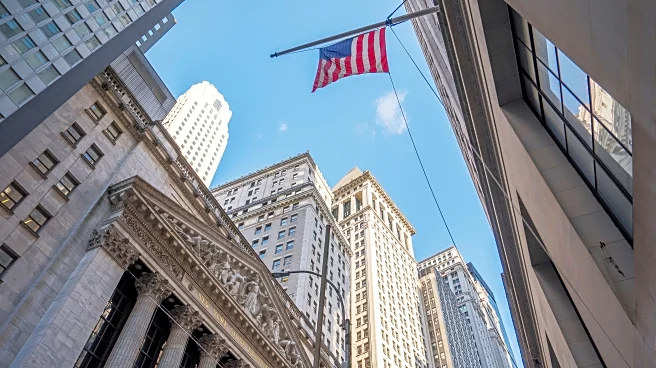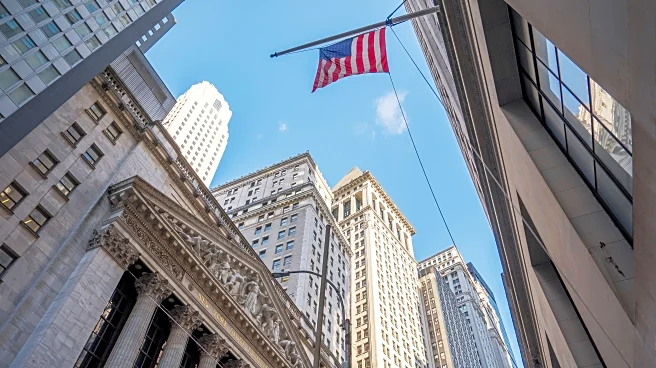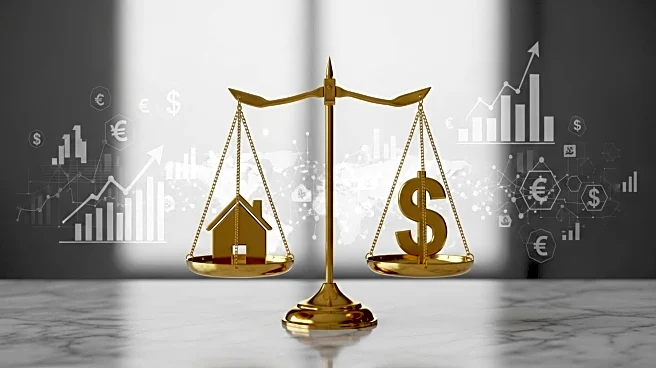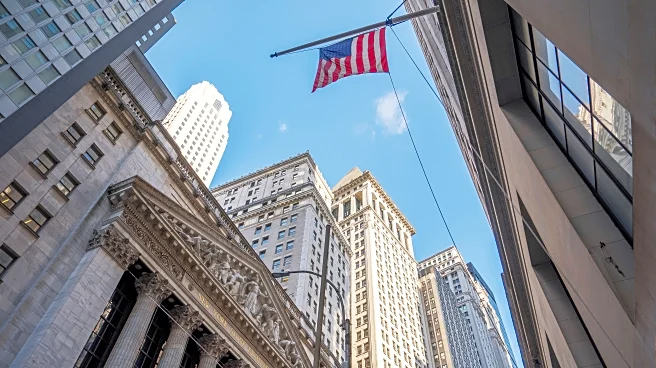What's Happening?
A stock market metric known as the Buffett Indicator, named after renowned investor Warren Buffett, has reached a record high, signaling potential risks reminiscent of the dot-com bubble of the early 2000s. The indicator compares the total value of U.S. stocks to the country's economic output. Historically, a ratio of around 100 percent is considered balanced, but the current ratio has surged to 217 percent, indicating that the stock market is more than twice the size of the economy. This development raises concerns about a potential bubble, particularly fueled by high investments in artificial intelligence and other growth sectors. Despite these concerns, the U.S. economy continues to grow at a modest pace, with a GDP increase of 3.8 percent from April through June. However, Federal Reserve Chairman Jerome Powell has projected a slowdown to 1.8 percent by the end of the year.
Why It's Important?
The record high of the Buffett Indicator suggests that the stock market may be overvalued, posing risks of a potential market correction or crash. This situation is particularly significant for investors and financial markets, as it echoes the conditions leading up to the dot-com bubble burst. The current market dynamics, driven by substantial investments in technology and AI, could lead to unsustainable valuations. If a correction occurs, it could have widespread implications for the U.S. economy, affecting investor confidence, market stability, and potentially leading to financial losses. The situation also highlights the concentration of investments in a few large tech companies, which could exacerbate the impact of any market downturn.
What's Next?
Investors and market analysts will likely continue to monitor the Buffett Indicator and other economic signals closely. There may be increased scrutiny on the valuations of tech companies and the sustainability of their growth. Financial institutions and policymakers might also consider measures to mitigate potential risks associated with an overheated market. Additionally, any changes in economic policy or interest rates by the Federal Reserve could influence market dynamics and investor behavior. Stakeholders will be keenly observing for any signs of a market correction or adjustments in investment strategies.
Beyond the Headlines
The current market conditions raise questions about the long-term sustainability of tech-driven growth and the potential need for regulatory oversight to prevent market excesses. The situation also underscores the importance of diversification in investment portfolios to mitigate risks associated with market volatility. Furthermore, the reliance on a few large tech companies for market gains highlights potential vulnerabilities in the broader economic landscape, which could have implications for employment, innovation, and economic resilience.












